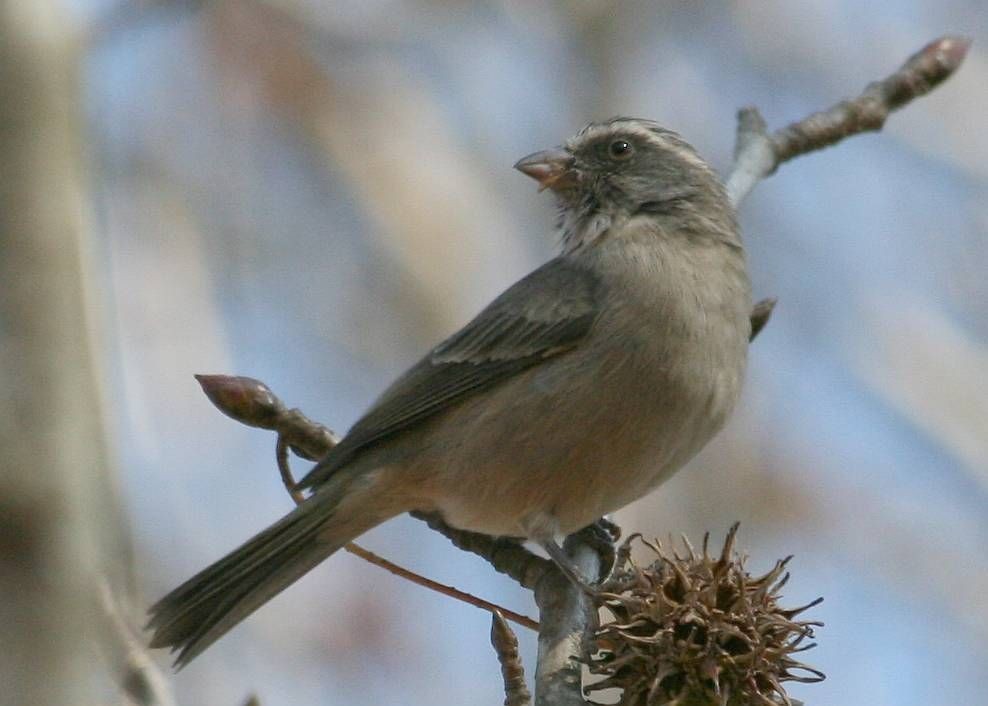Streaky-headed Seedeater
A species of African seedeaters Scientific name : Crithagra gularis Genus : African seedeaters
Streaky-headed Seedeater, A species of African seedeaters
Botanical name: Crithagra gularis
Genus: African seedeaters
Content
Description General Info
 Photo By Alan Manson , used under CC-BY-SA-2.0 /Cropped and compressed from original
Photo By Alan Manson , used under CC-BY-SA-2.0 /Cropped and compressed from original Description
The streaky-headed seedeater is 13–14 cm in length. The adult has brown upperparts with some faint streaking and a plain brown rump. The head has a finely white-streaked crown, dark face, and white supercilium and chin. The underparts are warm buff. The sexes are similar, but some females show a little breast streaking. The juvenile has less head streaking, a dull supercilium, more heavily streaked upperparts, and heavy streaking on the pale grey underparts. 
Size
16 cm
Nest Placement
Tree
Feeding Habits
Streaky-headed Seedeater primarily eat a variety of seeds, flowers, fruits, and insects. They forage on the ground and plants, holding food with their feet while eating. Their diet includes seeds from sunflowers and cereals, fruit like figs, and insects such as termites. A unique behavior is piercing flowers to extract nectar. Streaky-headed Seedeater feed alone or in mixed-species flocks.
Habitat
The streaky-headed Seedeater thrives in open woodlands and scrublands, specifically acacia and Terminalia woodlands, and thorn-scrub regions. They are adapted to a variety of altitudes but show preference for slopes and hillsides up to 2100 meters, often venturing into orchards, gardens, and suburban spaces. Their habitats are broadly situated within savanna ecosystems where they benefit from the vegetation of clearings and cultivated edges.
Dite type
Granivorous
General Info
Feeding Habits
Bird food type
Behavior
The streaky-headed seedeater is usually seen in pairs, but can be gregarious, forming large flocks, alone or with other canary species. It feeds on soft fruit, weed seeds and buds, and sometimes takes insects. Large flocks can damage sunflower, millet and other cereal crops. This is an unobtrusive finch, often perching inside bushes. Its call is a soft tseee, and the song is a wit-chee-chee-chee-cha cha cha cha chip, interspersed with mimicry of other species. There is also a tweu tweu tirrirrit-tink given in display flight. 
Distribution Area
Its habitat is open woodland and scrub, including savanna, orchards, and gardens. It builds a compact cup nest in a scrub. 
Species Status
Not globally threatened.
Scientific Classification
Phylum
Chordates Class
Birds Order
Perching birds Family
Finches Genus
African seedeaters Species
Streaky-headed Seedeater